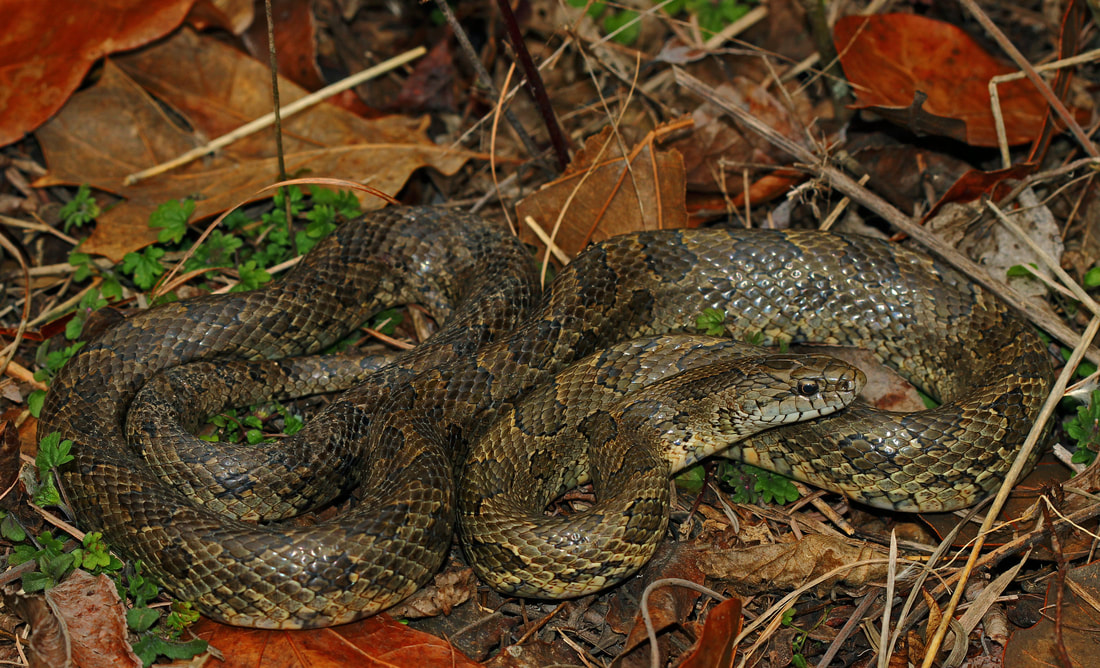PRAIRIE KINGSNAKE
Lampropeltis calligaster calligaster
Constrictor- Nonvenomous
A medium-sized snake, common over most of the state. Prairie Kingsnakes are light gray or brown with darker brown blotches. There are two elongated blotches on the neck, and a triangle shaped marking on the top of the head that points backwards towards the tail. The belly is light colored and checkered with black markings.
Adults are 30-42 inches.
Their preferred habitat are native prairies, open grassland with loose, dry soil, typically on the edge of a forested region, not far from a permanent source of water.
Their diet consists primarily of rodents, but they will also consume lizards and frogs.
Kingsnakes are known for their ability to eat other snakes, including venomous species, and they are immune to the venom of copperheads, cottonmouths, and rattlesnakes. Like the rest of the kingsnakes, it will strike, emit a musky smell and vibrate its tail when alarmed.
A medium-sized snake, common over most of the state. Prairie Kingsnakes are light gray or brown with darker brown blotches. There are two elongated blotches on the neck, and a triangle shaped marking on the top of the head that points backwards towards the tail. The belly is light colored and checkered with black markings.
Adults are 30-42 inches.
Their preferred habitat are native prairies, open grassland with loose, dry soil, typically on the edge of a forested region, not far from a permanent source of water.
Their diet consists primarily of rodents, but they will also consume lizards and frogs.
Kingsnakes are known for their ability to eat other snakes, including venomous species, and they are immune to the venom of copperheads, cottonmouths, and rattlesnakes. Like the rest of the kingsnakes, it will strike, emit a musky smell and vibrate its tail when alarmed.
Photo by Peter Paplanus

